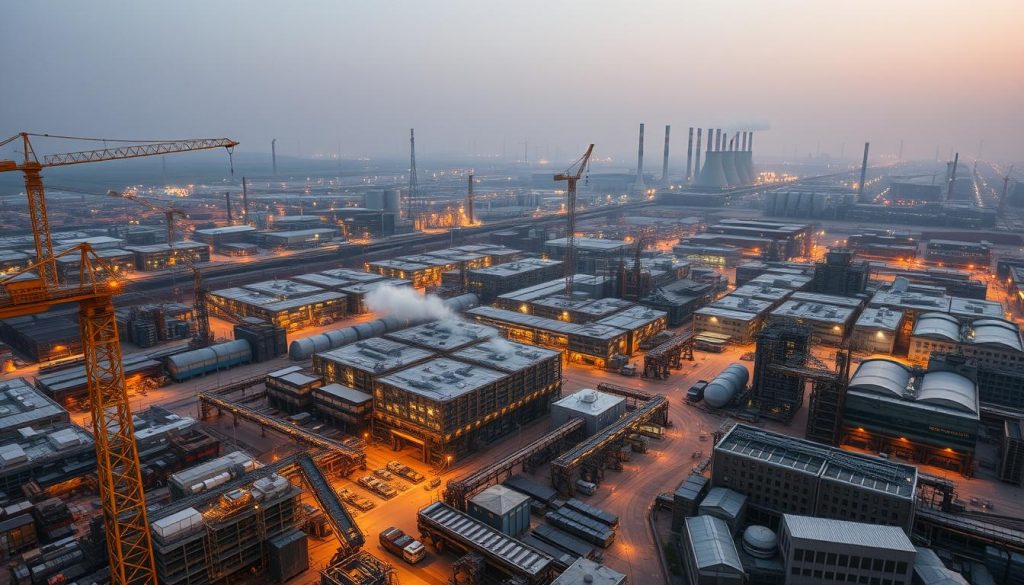SEK 8 billion changed hands when Volvo Construction Equipment agreed to divest a 70% interest in a major China-based manufacturer. That sum, and a potential c. SEK 1 billion operating uplift at closing gives scale to a strategic shift that will affect global construction equipment markets.
The company will concentrate on premium Volvo-branded products and services in China, while using local production sites and the Jinan Technology Centre to accelerate product development. This move ties into broader manufacturing industry news and recent automotive industry headlines that matter to UK readers.
Operationally, the sale frees resources for growth in targeted segments such as mining, aggregates, and heavy infrastructure. In parallel, Volvo CE’s planned purchase of Swecon in Europe signals a push to bring retail closer to customers and strengthen aftersales solutions.
Key Takeaways
- The SEK 8 billion transaction is a material global business news item with a c. SEK 1 billion closing uplift.
- Volvo Construction Equipment will prioritise premium Volvo-branded products and China-based production and development.
- Strengthening the Jinan Technology Centre aims to speed product development for worldwide use.
- European retail control via the Swecon acquisition will bring most retail in-house in key markets.
- UK stakeholders should watch supply chain, technology transfer and service delivery implications.
Breaking the story: the SDLG divestment and what happened today
Today’s announcement confirms a major transfer of ownership in China’s construction equipment market. Volvo Construction Equipment has completed the sale of a 70% stake sdlg for SEK 8 billion.
The buyer is a fund predominantly owned by the Lingong Group, which also has minority ties to SDLG. The transfer gives SDLG a clearer governance path under local backers and positions the company for independent growth.
Latest industry facts
Volvo CE expects an approximate SEK 1 billion positive effect on operating income at closing, though the final figure is subject to currency fluctuations. The deal was announced at the end of June and targets closing in H2 2025 pending regulatory approvals.
“The transformation imperative—both technological and commercial—required a refocus to stay competitive and deepen customer interactions,” said Melker Jernberg, head of Volvo Construction Equipment.
Operational and market impact
Operationally, Volvo CE will continue to use its system in China for production and export. The move lets the company sharpen focus on targeted segments and keep access to local suppliers and markets.
| Item | Detail | Timing |
|---|---|---|
| Transaction value | SEK 8 billion | Announced end-June |
| Ownership change | 70% sold to fund predominantly owned by Lingong Group | Closing H2 2025 (subject to approvals) |
| Operating impact | ~SEK 1 billion positive at closing (FX dependent) | At closing |
| Production | Continued use of the Chinese system for domestic & export production | Ongoing |
Why Did Volvo Sell Its SDLG Stake? Find Out Now
The Chinese market now demands sharper product positioning as local competition tightens and new technologies accelerate adoption.
Increasing competition and technology transition reshape China’s construction equipment market
Increasing competition has raised price pressure and squeezed margins for multi‑brand portfolios. Rapid electrification and digitalisation mean manufacturers must invest where returns are clearest.
Competition today is not only head‑to‑head on price but also about platform investments in automation, connectivity and service data.
From dual-brand to premium focus: Volvo Construction Equipment’s customer-centric pivot
Moving from a dual‑brand model to a premium products strategy allows clearer positioning. The aim is to win targeted segments where uptime and total cost of ownership matter most.
By focusing on premium products and sustainable solutions, the company expects to deepen customer engagement, improve aftermarket performance and tailor solutions targeted segments.
- Sharper focus on segments with high lifetime value.
- Streamlined products and services to support customer cohorts.
- Transaction structure with a buyer predominantly owned by the Lingong nexus reduces channel overlap.
| Driver | Effect | Priority |
|---|---|---|
| Increasing competition | Compressed margins for multi‑brand dealers | Premium positioning |
| Technology transition | Need for electrification and connectivity investment | Targeted R&D |
| Customer interaction | Demand for tailored service and uptime | Data‑driven aftermarket |
Inside the China strategy: premium products, targeted segments, and the industrial system
Operational plans concentrate on using Chinese manufacturing scale and R&D to accelerate products for demanding segments and export markets.

Sustainable solutions targeted to mining and heavy work
Sustainable solutions targeted at mining, quarrying, aggregates, and heavy infrastructure. These segments in China demand durability, high uptime, and clear total-cost benefits.
Efficiency and emissions reduction matter to operators and regulators. Tailored products deliver practical gains on site and in long‑term running costs.
Leveraging the industrial system for production and export
The industrial system China footprint will scale production efficiently. The Shanghai excavator facility and new lines support both domestic demand and export markets with consistent quality.
Accelerating development via Jinan and the Global Technology System
Jinan Technology Centre is being integrated into the Global Technology System to shorten development cycles. A common architecture helps standardise parts and speed time‑to‑market for new products.
Stronger supplier ecosystems and branded services
The shift tightens links with local and international suppliers, improving responsiveness within the industrial system. Consolidated platforms create reliability gains and new export opportunities.
- Focused segments China: mining, aggregates, heavy infrastructure.
- Production reach: use system China to serve domestic and export markets.
- Development edge: Jinan-led product architectures for global rollout.
Global business ripple effects: automotive and manufacturing industry news for the UK
The Swecon acquisition expands direct retail reach in Germany, Sweden, and the Baltics, reshaping supply and service for customers.
European retail expansion: Swecon acquisition to own and manage more of Europe
This investment brings sales, rentals, aftermarket, offices and workshops under one roof. Swecon’s FY2024 revenue stood at SEK 10 billion and the deal includes c. 1,400 employees.

Leadership framed the purchase as a way to get closer to each customer. Melker Jernberg and Carl Slotte say closer retail control will improve service consistency and parts availability.
- Owning retail can speed response times for UK contractors reliant on cross‑border parts and repairs.
- Germany’s market scale means supply and pricing shifts there can ripple into the UK market and wider infrastructure projects.
- Direct retail supports new business models: rentals, connectivity-enabled maintenance and flexible financing.
“The aim is to be closer to customers amid industry transformation,” said Melker Jernberg.
| Scope | Detail | Timing |
|---|---|---|
| Coverage | Sweden, Germany, Baltics | H2 2025 (expected) |
| Operations | Sales, rentals, aftermarket, workshops | Upon completion |
| Scale | c. 1,400 employees; SEK 10 billion revenue FY2024 | Reported FY2024 |
Conclusion: Why Did Volvo Sell Its SDLG Stake? Find Out Now
This move redirects resources towards premium equipment, tighter retail control, and faster product development.
The company divested the entire 70% stake in SDLG to a fund predominantly owned by the Lingong Group, creating an expected c. SEK 1 billion uplift at closing and a path to H2 2025 approvals.
By prioritising Volvo-branded premium offerings, leveraging system China for production and export, and scaling the Jinan Technology Centre, the firm keeps access to efficient production while speeding innovation.
For more Automotive articles, please follow the link


